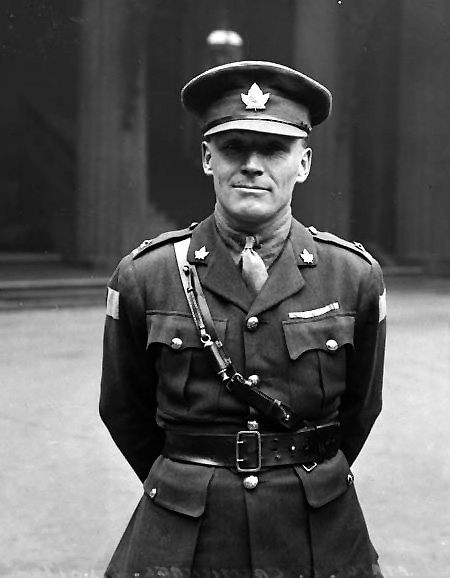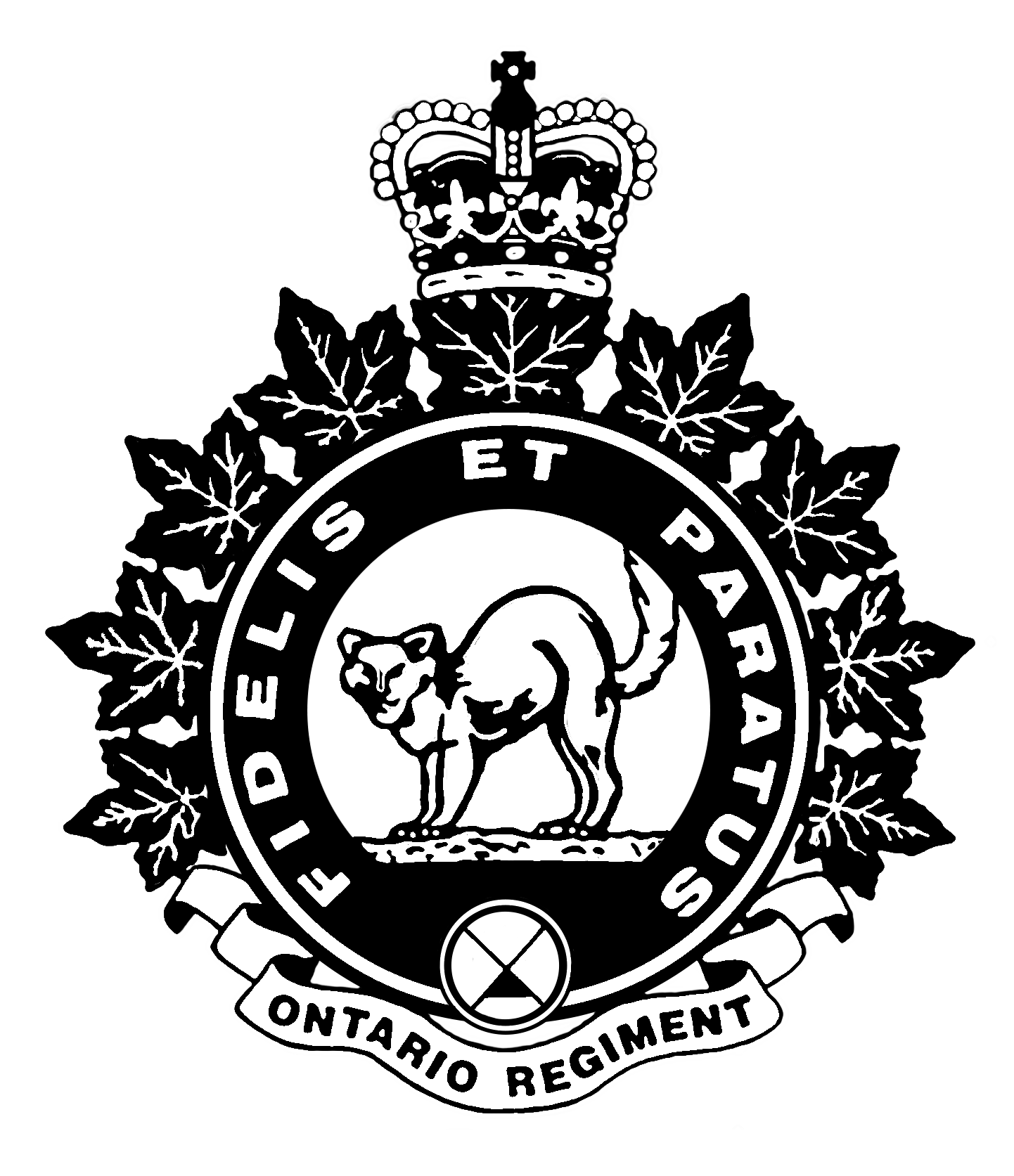The January 2024 article covered a comparison of the two commanding officers of the 116 th Battalion – Lieutenant Colonel Samuel S. Sharpe and Lieutenant Colonel George R. Pearkes. Some histories include Lieutenant Colonel Dougall Carmichael as commanding officer. The Wikipedia article lists the commanding officers as follows:
Lt.-Col. S.S. Sharpe, DSO, 23 July 1916 – 28 December 1917
Lt.-Col. G.R. Pearkes, VC, DSO, MC, 28 December 1917 – 17 September 1918
Lt.-Col. D. Carmichael, DSO, MC, 18 September 1918 – 26 November 1918
Lt.-Col. G.R. Pearkes, VC, DSO, MC, 25 November 1918-Demobilization

The source for this list is ” Over the Top! The Canadian Infantry in the First World War” by John F. Meek. First some facts on Major Carmichael before presenting the argument that Carmichael was not an official commanding officer, but rather an acting commanding officer. Dougall Carmichael was born on 8 November 1885 in Collingwood, ON. Prior to the First World War he was a farmer and served 10 years in the 35th Regiment Simcoe Foresters. He joined the Canadian Expeditionary Force on 30 June 1915 as a member of the 58 th Battalion with the rank of captain. By the end of the war had been awarded the Distinguished Service Order and Bar, the Military Cross and Bar, and was Mentioned in Despatches twice. By late 1918 he was the deputy commanding officer of the 58 th Battalion.
Lieutenant Colonel Pearkes was severely wounded on 17 September 1918 and evacuated. Major Carmichael transferred from the 58 th Battalion on 26 September to command the 116 th Battalion. Pearkes’ injury was serious enough that it was two weeks before it was known that he would even survive. Not only did he survive, he recovered enough that he returned to command the 116 th Battalion in late November 1918.
Major Carmichael had been granted 30 days special leave to the UK on 10 November and was not at the battalion when LCol Pearkes returned.
On the surface it would seem that Major Carmichael was briefly the official commanding officer. A look at his service record (available here) provides some interesting details that would refute that. The file is somewhat confusing, but there are some notes about transferring to the 116 th Battalion that were later amended.
One interesting entry with a report date of 15 December 1918 says, “The notification which appeared in List No 212 dated 3-11-18 regarding the transfer of Temp Major D. Carmichael D.S.O. M.C. from 58 th Bn to 116 th Bn is cancelled.” Later in the service record there are similar modifications. There is an entry from 3 November 1918 referring to his transfer to the 116 th Bn and one from 16 November regarding him being
granted the rank of acting lieutenant colonel. Both of these entries have margin notes in red that state that they are cancelled and to refer to a later entry. The unaltered entry clarifies his situation as, “To be acting Lt.Col whilst cmmdg 116 th Bn vice Temp. Lt.Col Pearkes G.R. V.C. M.C. (wounded) from 30-10-18 to 23-11-18 (substituted for the verification which appeared in List No 216 1/12/18.)”. The updated entry
clarifies and sets a specific timeline for his time as an acting lieutenant colonel.
Major Carmichael seems to have originally been intended to be confirmed as commanding officer, but retroactively changed to acting commanding officer. It is likely due to the fact that LCol Pearkes recovered from his wounds and returned to command to the 116th. It is possible that if LCol Pearkes had been unable to return due to death or extended recovery from his wounds then Carmichael would have remained as commanding officer until the Battalion was demobilized and probably confirmed as a lieutenant colonel.
One can only speculate on the reasons for this change in Carmichael’s career, but it is reasonable to assume that Pearkes’ war record and the respect generated as a Victoria Cross recipient led higher levels of command to present him as the uninterrupted commanding officer of the 116 th Battalion. The short length of time that Carmichael was in command was likely as factor as well. He assumed command on 18 September and left on special leave on 10 November, a total of 53 days. This leaves Acting LCol Carmichael in an odd career position. On one hand his tenure was somewhat
more than a situation where a battalion’s deputy commanding officer becomes the acting commanding officer when the actual commanding officer is away from the battalion. On the other hand, his time does not measure up to the level of a confirmed commanding officer.
So, why did the book Over to Top! present Acting LCol Carmichael as the commanding officer? The book was published in 1971 when the First World War service records were not as accessible as they are today, so some oversights were likely to happen.
Acting LCol Carmichael was discharged from the Canadian Expeditionary Force on 24 March 1919 due to general demobilization. He was elected to the Ontario Legislature in 1919 and served two terms. Carmichael also served as the head of the Ontario Hydro Electric Power Commission. He married Grace Devereaux in 1920 and they had one daughter, Mary. In 1930 he was appointed to the War Veterans’ Allowances Board, eventually becoming the chairman. He was briefly the officer commanding the Officers’ Training Corps at Brockville, ON during the Second World War.
Dougall Carmichael passed away on 15 September 1945 after a short illness, just short of his 60th birthday.
Rod Henderson
Rod Henderson is the Regimental Historian of the Ontario Regiment. He served as a Sergeant in the Regiment and is the author of “Fidelis Et Paratus: The History of The Ontario Regiment RCAC”.

